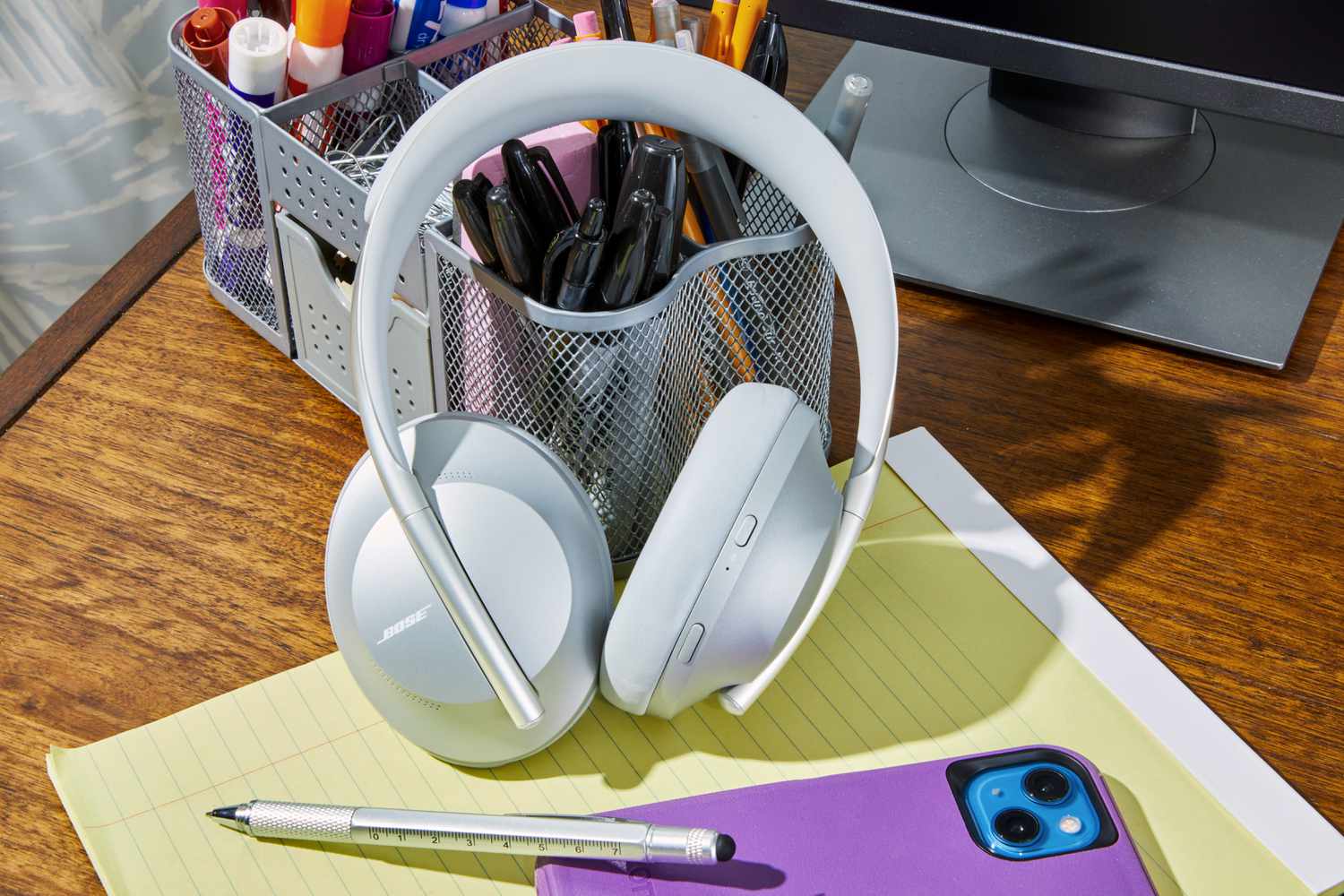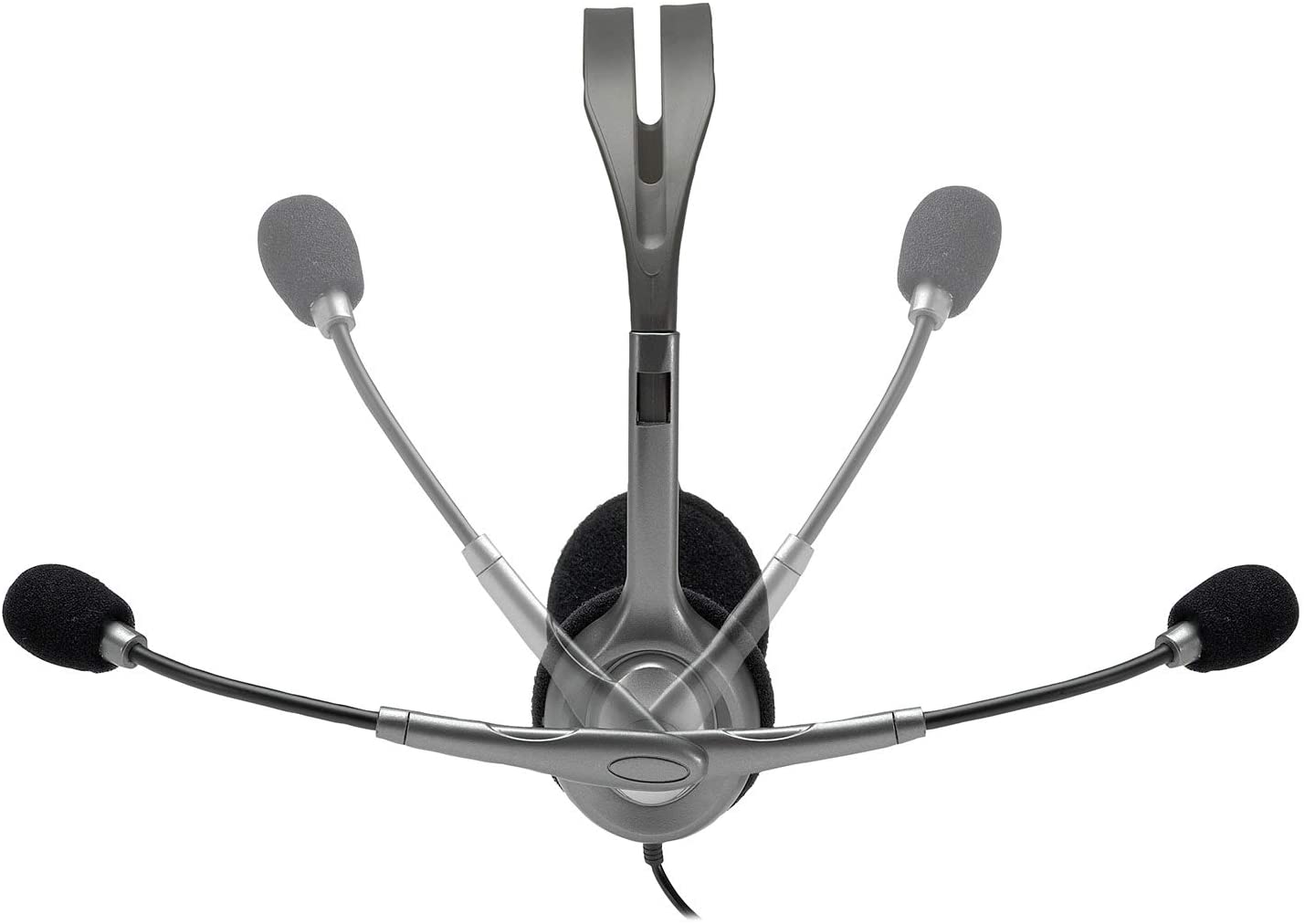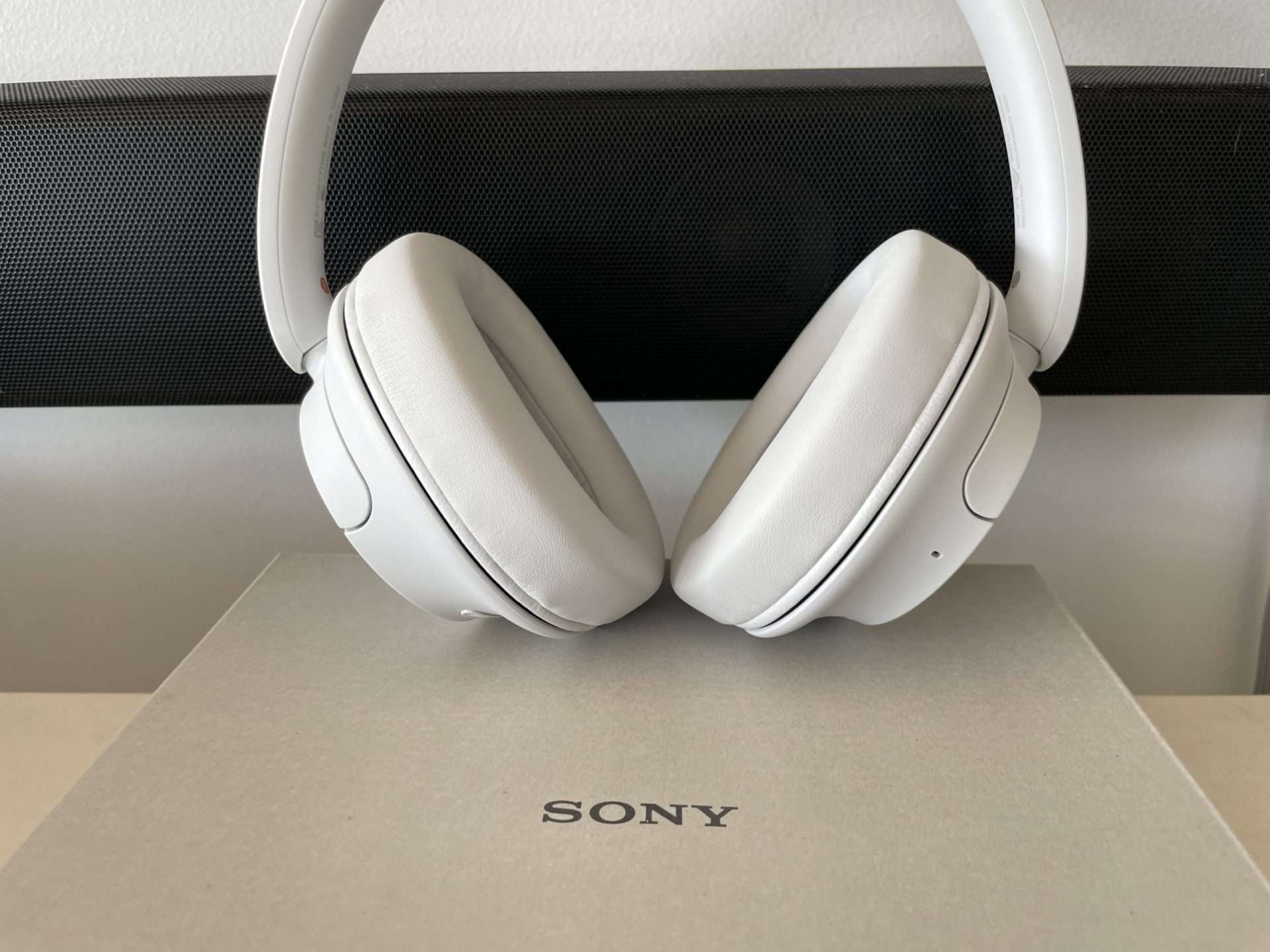Home>Production & Technology>Noise Cancellation>How Do Noise Cancellation Headphones Work


Noise Cancellation
How Do Noise Cancellation Headphones Work
Modified: February 18, 2024
Discover how noise cancellation headphones work and block out unwanted background noise. Improve your listening experience with noise cancellation technology.
(Many of the links in this article redirect to a specific reviewed product. Your purchase of these products through affiliate links helps to generate commission for AudioLover.com, at no extra cost. Learn more)
Table of Contents
- Introduction
- Basic Concepts of Noise Cancellation
- Passive Noise Cancellation
- Active Noise Cancellation
- How Active Noise Cancellation Works
- Components of Active Noise Cancellation Headphones
- Digital Signal Processing in Noise Cancellation
- Benefits of Noise Cancellation Headphones
- Limitations and Drawbacks of Noise Cancellation Headphones
- Conclusion
Introduction
Noise cancellation headphones have become increasingly popular in recent years, offering a way to escape the relentless noise of our modern world. Whether you’re traveling on a noisy airplane, working in a bustling café, or just trying to find some peace and quiet at home, noise cancellation headphones can provide a sanctuary of tranquility.
But have you ever wondered how noise cancellation headphones work? How is it possible for these headphones to magically eliminate the background noise and create a serene listening experience? In this article, we will explore the technology behind noise cancellation headphones and uncover their fascinating inner workings.
At its core, noise cancellation technology aims to reduce unwanted sounds, allowing us to focus on the audio we want to hear. Traditional headphones, also known as passive headphones, work by physically blocking external noise through the use of cushioning materials to create a seal around the ears. While this method can provide some level of noise reduction, it may not be sufficient against loud or persistent noises.
Basic Concepts of Noise Cancellation
To understand how noise cancellation headphones work, it’s important to grasp a few fundamental concepts. Noise cancellation relies on the principle of sound waves and interference.
Sound waves are made up of compressions and rarefactions of air molecules that travel in a wave-like pattern. When two sound waves meet, they can either reinforce each other, resulting in a louder sound, or cancel each other out, causing a reduction in volume.
Noise cancellation headphones take advantage of this concept by producing a sound wave that is the exact opposite (in phase) of the unwanted noise. The goal is to create destructive interference, where the troughs of the noise cancel out the peaks of the unwanted sound waves.
Passive noise cancellation, as mentioned earlier, can provide some degree of noise reduction by physically blocking external noise. However, active noise cancellation takes it a step further by actively generating anti-noise to counteract the unwanted sound waves.
Active noise cancellation works by using microphones to pick up the ambient noise in the surrounding environment. These microphones are strategically placed on the headphones to capture the external sounds.
The captured sound is then processed by an electronic circuit, which generates an opposite sound wave (anti-noise) to cancel out the external noise. This anti-noise is then mixed with the audio signal that the user wants to hear, creating a quieter and more immersive listening experience.
It’s important to note that noise cancellation is most effective against steady, low-frequency sounds such as the hum of an airplane engine or the rumble of a train. However, it may not be as effective against sudden, high-pitched noises such as a loud conversation or a door slamming.
Passive Noise Cancellation
Passive noise cancellation, also referred to as noise isolation, is the most basic form of noise reduction in headphones. It relies on the physical design and construction of the headphones to block out external noise without the need for any electronic components.
The primary mechanism of passive noise cancellation is the use of noise-isolating materials and a closed-back design. Noise-isolating materials, such as foam or silicone ear tips, create a tight seal in the ear canal, preventing outside noises from entering. By forming a physical barrier, these materials block and absorb the external sound waves, reducing their impact on the listener.
In addition to the ear tips, the closed-back design of the headphones further contributes to passive noise cancellation. The closed-back design encloses the speakers, preventing sound from leaking out and minimizing the amount of ambient noise that can seep into the ear cups.
Passive noise cancellation is effective in reducing low-frequency sounds and can provide a moderate level of noise reduction. It is particularly useful in quiet environments or for casual use when you need to block out moderate external noise.
However, passive noise cancellation has its limitations. It may not be as effective against very loud or persistent noises, as the physical barriers may not provide complete isolation. Additionally, it does not actively counteract the noise; instead, it relies solely on the materials and design of the headphones to block out the sound waves.
While passive noise cancellation is a simple and cost-effective solution, it may not be sufficient for individuals who require a higher level of noise reduction or frequently find themselves in noisy environments. This is where active noise cancellation (ANC) comes into play, offering a more advanced and immersive listening experience.
Active Noise Cancellation
Active noise cancellation (ANC) takes noise reduction to the next level by incorporating advanced technology and electronic components to actively counteract external noise. Unlike passive noise cancellation, which relies on physical barriers, ANC headphones actively generate anti-noise to cancel out unwanted sounds.
The core principle of active noise cancellation is based on the concept of destructive interference. ANC headphones use built-in microphones to pick up the ambient noise in the surrounding environment. These microphones capture the external sound waves and send the signal to an electronic circuit or processor.
The electronic circuit analyzes the frequencies and amplitudes of the incoming noise and generates an inverted sound wave, often referred to as anti-noise or anti-phase sound. This anti-noise is then mixed with the audio signal that the listener wants to hear, effectively canceling out the unwanted noise.
By creating destructive interference between the anti-noise and the external noise, active noise cancellation reduces the intensity and perceptibility of the ambient sounds. This allows the listener to enjoy their audio content with greater clarity and immersion even in noisy environments.
Active noise cancellation is particularly effective in reducing low-frequency sounds, such as engine rumble, airplane noise, or background chatter. These types of sounds are generally predictable and repetitive, making them easier to analyze and cancel out using ANC technology.
However, it’s important to note that active noise cancellation is not equally effective across all frequency ranges. It may not provide as significant noise reduction for sudden or high-pitched noises, as the system requires a certain amount of time to analyze and generate the counteracting anti-noise.
Despite this limitation, active noise cancellation can make a significant difference in creating a more peaceful and immersive listening experience, especially in environments with constant or droning noises.
Now that we have explored the basic concepts of active noise cancellation, let’s take a closer look at the components and workings of active noise cancellation headphones in the next section.
How Active Noise Cancellation Works
Active noise cancellation (ANC) harnesses the power of technology and intricate algorithms to create a quiet and immersive listening experience. Understanding how ANC works can provide insights into the complexity behind these sophisticated headphones.
The process of active noise cancellation involves several key steps:
- Microphone Pickup: ANC headphones are equipped with one or more tiny microphones located on the ear cups. These microphones capture the surrounding sounds, including both the desired audio and the unwanted noise.
- Signal Processing: The captured soundwave is then sent to an electronic circuit or processor, where it undergoes a series of intricate digital signal processing (DSP) algorithms. These algorithms analyze the frequency, amplitude, and phase characteristics of the noise.
- Generation of Anti-Noise: Based on the analysis, the processor generates a corresponding soundwave that is precisely opposite (180 degrees out of phase) to the detected noise. This anti-noise soundwave is generated in real-time and is specifically designed to cancel out the unwanted noise.
- Combining the Anti-Noise with Audio Signal: The anti-noise soundwave is then combined with the audio signal that the listener wants to hear. This combination of the desired audio and the anti-noise produces a quiet and enriched listening experience by effectively canceling out the ambient noise.
The effectiveness of active noise cancellation depends heavily on the accuracy and speed of the algorithms used in the DSP. These algorithms must be able to identify and analyze the characteristics of the noise, generate a precise anti-noise waveform, and seamlessly integrate it with the audio signal in real-time.
It’s important to note that active noise cancellation mainly focuses on lower-frequency sounds, which are more predictable and repetitive in nature. These sounds, such as engine noise or air conditioning hum, can be effectively canceled out by the anti-noise waveform.
However, active noise cancellation may have limited effectiveness against sudden or high-pitched noises, as the algorithms require time to analyze and react to these types of sounds. Additionally, the physical design and fit of the headphones play a role in the overall noise reduction capability.
Overall, active noise cancellation technology continues to advance, allowing for improved noise reduction and enhanced audio experiences. It’s an intricate marriage of hardware and software, working in tandem to create a sanctuary of tranquility in the midst of a noisy world.
Components of Active Noise Cancellation Headphones
Active noise cancellation headphones are complex devices that incorporate various components to deliver their impressive noise-reducing capabilities. Understanding the key components can provide insights into the technology behind these advanced headphones.
1. Microphones: Active noise cancellation headphones include one or more microphones strategically placed on the ear cups. These microphones pick up the surrounding sounds, capturing both the desired audio and the unwanted noise. The quality and placement of the microphones significantly impact the effectiveness of noise cancellation.
2. Electronic Circuit/Processor: The captured audio from the microphones is sent to an electronic circuit or processor. This circuit is responsible for processing the sound signals and generating the anti-noise waveform. The quality and efficiency of the electronic circuit affect the accuracy and speed of the noise cancellation process.
3. Digital Signal Processing (DSP) Algorithm: The electronic circuit utilizes sophisticated digital signal processing algorithms to analyze the incoming audio signals. These algorithms extract the relevant characteristics of the noise, such as frequency, amplitude, and phase, and generate the corresponding anti-noise waveform. The effectiveness of the DSP algorithms determines the quality of noise cancellation.
4. Driver Units: Active noise cancellation headphones feature speaker drivers or transducers that convert electrical signals into sound waves. The driver units are responsible for delivering the desired audio to the listener’s ears. The quality of the drivers impacts the overall sound quality and clarity.
5. Battery and Power Management: Since active noise cancellation requires power to operate, these headphones include an internal battery for supplying the necessary energy. The battery life may vary depending on the specific model and usage patterns. Efficient power management systems ensure optimal performance and extended battery life.
6. Controls and Connectivity: Active noise cancellation headphones often incorporate control buttons or touch-sensitive panels for adjusting volume levels, activating noise cancellation, or interacting with various audio functions. They may also have Bluetooth or wired connectivity options, allowing users to connect to their devices wirelessly or using cables.
7. Materials and Construction: The physical design and materials used in the construction of active noise cancellation headphones can impact their noise isolation capabilities. High-quality materials that provide a tight seal and reduce sound leakage contribute to better passive noise cancellation, enhancing the overall effectiveness of the active noise cancellation technology.
These are some of the core components that work together to create the immersive noise cancellation experience offered by active noise cancellation headphones. The integration and synergy of these components determine the overall performance and quality of the headphones.
Digital Signal Processing in Noise Cancellation
Digital Signal Processing (DSP) plays a crucial role in the functioning of active noise cancellation (ANC) headphones. It involves employing sophisticated algorithms and computational power to analyze and manipulate audio signals for effective noise reduction.
1. Noise Analysis: The digital signal processing begins by analyzing the audio signals captured by the microphones. The DSP algorithms extract crucial information such as the frequency, amplitude, and phase characteristics of the noise. This analysis helps in identifying the unwanted sounds that need to be canceled out.
2. Generation of Anti-Noise: Once the noise characteristics have been analyzed, the DSP algorithms generate a precise anti-noise waveform. This waveform is specifically designed to cancel out the identified unwanted noise by generating sound waves with opposite phase and amplitude.
3. Real-Time Processing: Active noise cancellation headphones rely on real-time processing to ensure immediate and continuous noise reduction. The DSP algorithms need to operate quickly and efficiently to generate the anti-noise waveform in real-time, aligning it with the incoming audio signal without noticeable delay.
4. Adaptive Filtering: Some advanced ANC headphones utilize adaptive filtering techniques in their DSP algorithms. This involves continuously monitoring and adjusting the generated anti-noise waveform based on changes in the surrounding noise environment. Adaptive filtering helps to provide more accurate and effective noise cancellation in dynamic and varying noise conditions.
5. Audio Integration: The anti-noise waveform generated by the DSP algorithms is combined with the audio signal that the listener wants to hear. This integration allows for the anti-noise to cancel out the unwanted noise while preserving the clarity and quality of the desired audio. The blending of the anti-noise with the audio signal needs to be seamless to provide an uninterrupted listening experience.
6. Power Optimization: DSP algorithms in active noise cancellation headphones also focus on optimizing power consumption. Efficiency in power usage ensures prolonged battery life, allowing users to enjoy the benefits of noise cancellation for extended periods.
Digital signal processing is an essential aspect of active noise cancellation technology, allowing ANC headphones to effectively analyze and manipulate audio signals to eliminate unwanted noise. The advancements in DSP algorithms continue to enhance the noise cancellation capabilities, providing users with immersive and uninterrupted audio experiences in various environments.
Benefits of Noise Cancellation Headphones
Noise cancellation headphones offer numerous advantages, making them a popular choice among different user groups. Whether you’re a frequent traveler, a remote worker, or someone seeking respite from a noisy environment, these headphones can greatly enhance your listening experience. Let’s explore some of the key benefits of noise cancellation headphones:
1. Noise Reduction: The primary benefit of noise cancellation headphones is their ability to significantly reduce external noise. Whether it’s the hum of an airplane engine, the chatter of a crowded café, or the sounds of a bustling office, noise cancellation technology actively works to diminish unwanted noise. This allows you to enjoy your audio content or simply find peace and quiet in a noisy environment.
2. Improved Audio Quality: By reducing the amount of external noise, noise cancellation headphones enhance the overall audio experience. With less background noise, you can better focus on the details and nuances of your music, podcasts, or movies. The clarity and richness of the audio are improved, providing a more immersive and enjoyable listening experience.
3. Enhanced Concentration and Productivity: Noise cancellation headphones can be an invaluable tool for individuals who need to concentrate or work in noisy settings. By creating a peaceful environment, these headphones help you stay focused and block out distractions. Whether you’re studying, working, or engaging in creative tasks, noise cancellation headphones can boost your productivity and concentration levels.
4. Travel-friendly: Noise cancellation headphones are particularly beneficial for travelers. Whether you’re on a plane, train, or bus, these headphones can help transform a noisy journey into a more peaceful one. By reducing engine noise, background chatter, and other travel noises, you can enjoy your favorite music or podcasts without having to raise the volume or strain to hear.
5. Less Ear Fatigue: In loud environments, people often tend to crank up the volume on their headphones to compensate for the external noise. However, with noise cancellation headphones, you can listen to audio at lower, safer volume levels. This reduces the strain on your ears and helps prevent potential ear fatigue or damage from prolonged exposure to loud sounds.
6. Privacy: Noise cancellation headphones provide a sense of privacy by creating a personal sound bubble. Whether you’re listening to confidential work-related calls or just want to keep your audio content to yourself, noise cancellation technology ensures that your sounds stay within your headphones, without disturbing those around you.
7. Relaxation and Stress Relief: Noise cancellation headphones can also be used for relaxation and stress relief. By blocking out external noise and distractions, you can create a peaceful environment where you can unwind, meditate, or simply enjoy moments of tranquility.
Noise cancellation headphones offer a range of benefits, from reducing external noise and improving audio quality to enhancing concentration, productivity, and relaxation. Whether you’re a frequent traveler, a professional in a noisy workspace, or simply seeking a more immersive listening experience, noise cancellation headphones can greatly enhance your audio enjoyment and overall well-being.
Limitations and Drawbacks of Noise Cancellation Headphones
While noise cancellation headphones offer numerous benefits, it’s important to be aware of their limitations and drawbacks. Understanding these limitations can help you make an informed decision and set realistic expectations when using these headphones. Let’s explore some of the key limitations:
1. Effectiveness Against Sudden and High-Pitched Noises: Noise cancellation technology is most effective against continuous, low-frequency sounds. It may not provide as significant noise reduction for sudden and high-pitched noises such as a loud conversation or a sudden loud noise. These types of noises can be challenging to cancel out in real time, as the noise cancellation system requires a certain amount of time to analyze and generate the anti-noise waveform.
2. Sound Quality Impact: Active noise cancellation can sometimes impact the overall sound quality of the audio. The algorithms and processing involved in noise cancellation may introduce slight artifacts or affect the frequency response of the audio. However, advancements in technology have significantly reduced this impact, and many high-quality noise cancellation headphones offer impressive sound performance.
3. Reliance on Batteries: Active noise cancellation headphones require power to operate, usually from an internal battery. This means that you need to ensure the headphones are sufficiently charged or have access to a power source. If the battery runs out, you may lose the noise cancellation feature, and the headphones may only function in passive mode. However, many noise cancellation headphones offer long battery life and can be used even without noise cancellation enabled.
4. Comfort and Fit: Noise cancellation headphones typically have a bulkier design compared to standard headphones. The added components necessary for noise cancellation technology can make them slightly heavier and less compact. Additionally, the fit and comfort can vary from person to person. It’s essential to find the right size and fit to ensure comfort during extended listening sessions.
5. Cost: Noise cancellation headphones tend to be more expensive than regular headphones. The advanced technology and components involved in noise cancellation contribute to the higher price point. However, there are options available at various price ranges, and the benefits of noise cancellation may outweigh the additional cost for those who frequently find themselves in noisy environments.
6. Dependency on Active Noise Cancellation: Some users may become overly reliant on active noise cancellation and rely on it as the sole method of noise reduction. While noise cancellation can be highly effective, it’s important to also consider and practice passive noise reduction techniques, such as using well-fitting ear tips or finding quieter environments when possible.
7. Limited Performance in Open-Back Headphones: Noise cancellation technology is designed primarily for closed-back headphones, where the ear cups create a seal around the ears and minimize sound leakage. Open-back headphones, which allow sound to pass through the ear cups more freely, may not provide the same level of noise reduction as closed-back models.
Despite these limitations, noise cancellation headphones remain a popular choice for many users seeking a quieter and more immersive listening experience. By understanding these drawbacks, you can make an informed decision and choose headphones that best suit your specific needs and preferences.
Conclusion
Noise cancellation headphones have revolutionized the way we experience audio in noisy environments. Through a combination of advanced technology, signal processing algorithms, and clever engineering, these headphones offer significant benefits for users seeking respite from unwanted noise.
Active noise cancellation effectively reduces external ambient sounds, allowing you to immerse yourself in your audio content with enhanced clarity and quality. Whether you’re traveling, working in a bustling environment, or simply looking for some peace and quiet, noise cancellation headphones can significantly improve your listening experience.
While noise cancellation technology has its limitations, such as its effectiveness against sudden and high-pitched noises, it continues to evolve and improve. With advancements in digital signal processing, the algorithms used in noise cancellation are becoming more sophisticated, enhancing noise reduction capabilities and adapting to different environments.
When choosing noise cancellation headphones, consider factors such as sound quality, comfort, battery life, and fit. It’s essential to find a pair that suits your preferences and needs. Additionally, it’s worth noting that noise cancellation is most effective for low-frequency, repetitive sounds, whereas sudden or high-pitched noises may not be as effectively cancelled out.
Overall, noise cancellation headphones offer a sanctuary of tranquility in the midst of a noisy world. They enhance concentration, productivity, and relaxation, and can provide an immersive listening experience that allows you to fully enjoy your audio content. By being aware of the limitations and considering your specific requirements, you can find the perfect pair of noise cancellation headphones to elevate your audio experience to new heights.











